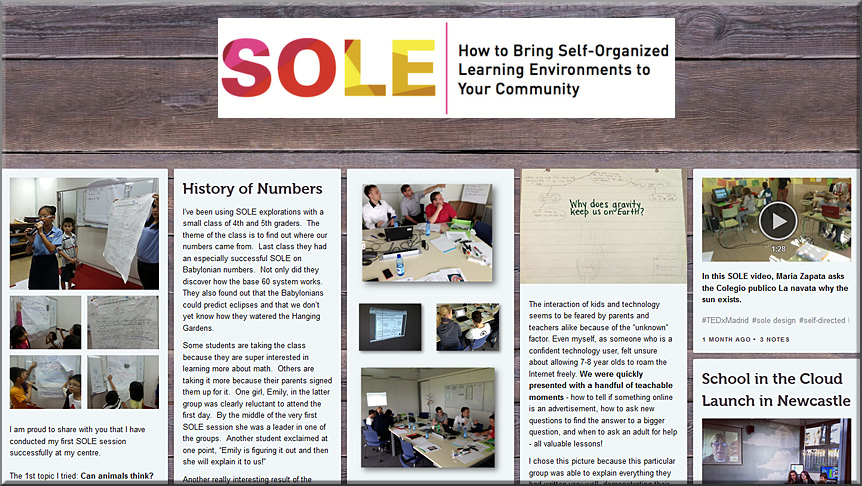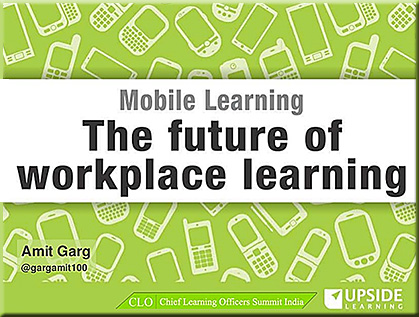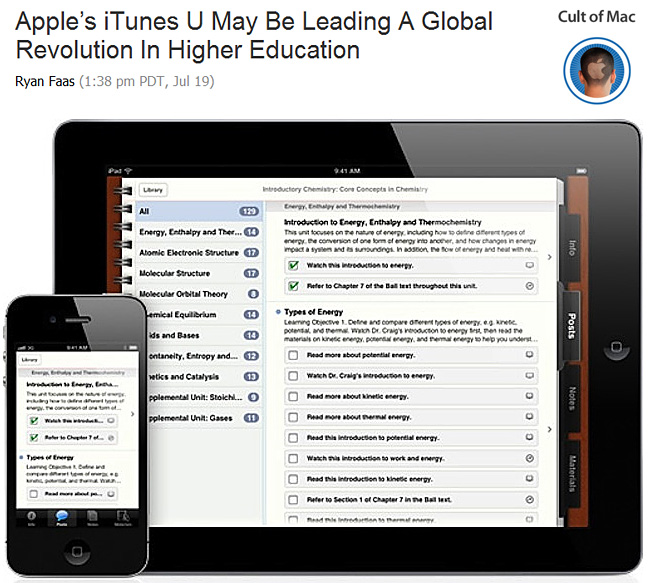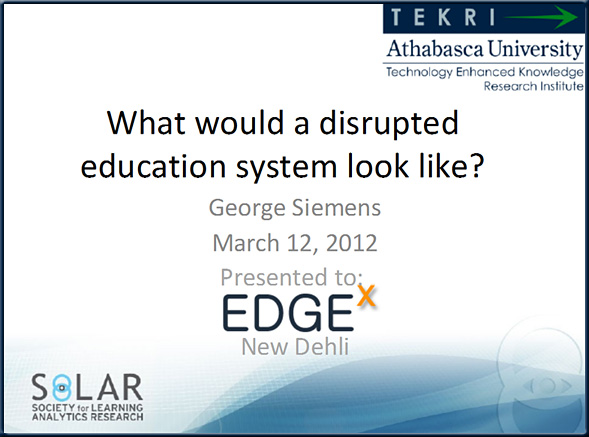The first School in the Cloud opens in the UK — from blog.ted.com by Sarah Schoengold; with thanks to Lisa Duty (@LisaDuty1) for posting this resource on Twitter

A group of students explores a question at the Killingworth School in the Cloud,
as a volunteer member of the “Granny Cloud” gives them guidance from the screen.
…
“SOLE” –> Stands for “Self-Organized Learning Environment.”
Excerpt:
Sugata Mitra has opened the doors of the world’s first School in the Cloud.
Located inside George Stephenson High School in Killingworth, England, this one-room learning lab is a space where students can embark on their own learning adventures, exploring whatever questions most intrigue them. Students even designed the interior of the space — which has colorful beanbags scattered throughout and (very appropriately) fluffy clouds painted on the walls.
…
The Killingworth School in the Cloud is run by a committee of 12-year-old students, who manage a schedule to let different classes and groups use the lab in time slots before, during and after school.
Also see:
Also see:
- The next phase of online education: 24/7 digital video channels — from fastcoexist.com by Ariel Schwartz
Want a new skill? Now you can channel flip at any time of day, just like on TV.
![The Living [Class] Room -- by Daniel Christian -- July 2012 -- a second device used in conjunction with a Smart/Connected TV](http://danielschristian.com/learning-ecosystems/wp-content/uploads/2012/07/The-Living-Class-Room-Daniel-S-Christian-July-2012.jpg)
Addendum:
- Top 10 Characteristics of a 21st Century Classroom –from edtechreview.in
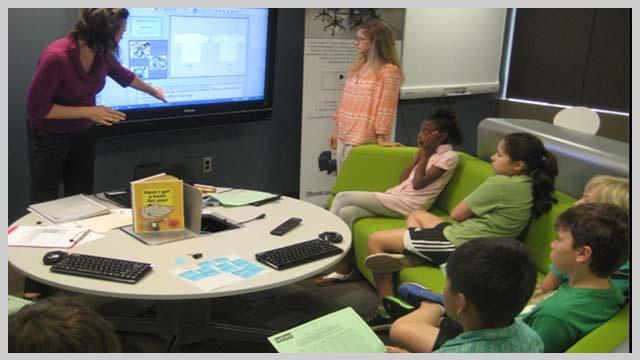
Top 10 Characteristics of a 21st Century Classroom
Excerpt:
As education advances with the help of technology, it becomes very clear that the modern day classroom needs are very different from the conventional classroom needs.
The evolved 21st century classroom is a productive environment in which students can develop the skills they will require in the workplace and teachers are facilitators of their learning. The focus of a 21st century classroom is on students experiencing the environment they will enter as modern day workers and developing their higher order thinking skills, effective communication skills, collaboration skills, making them adept with using technology and all other skills that they will need in the 21st century workplace.









